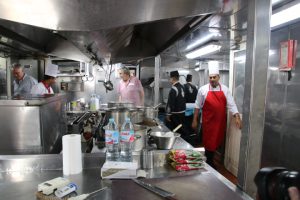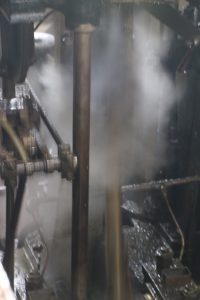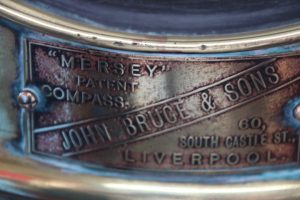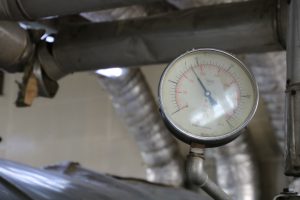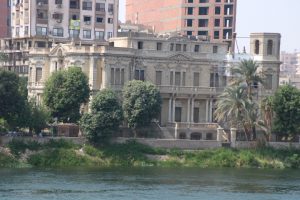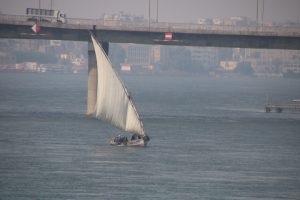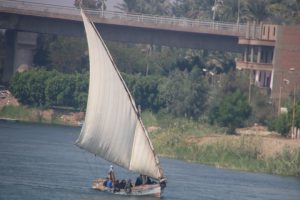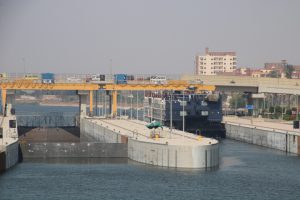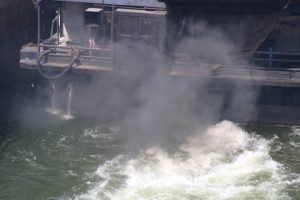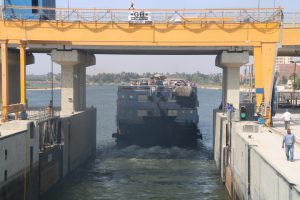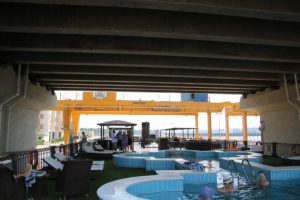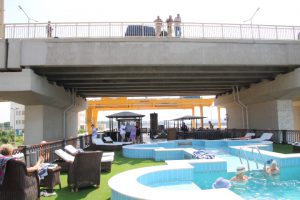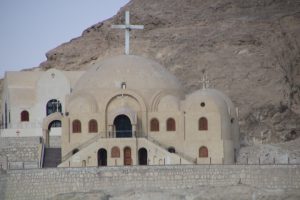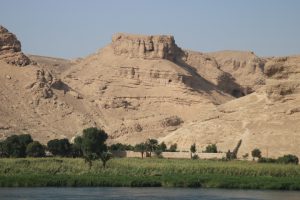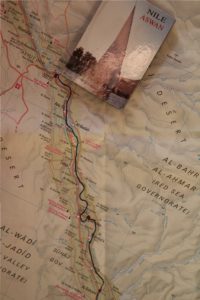Around 3:00 a.m. we set sail from Sohag. We took breakfast as we continued northwards to Asyut. During the morning we had an opportunity to visit the Galley and Engine Room. The Galley was small, in fact many kitchens in British houses were built of this size, so it was clearly a juggling act to prepare such delicious food for all of us.
Our ship was originally one of six of its type. Four were minesweepers and spent time in the Caribbean and the remaining two were tugs named the ET7 (now the Misr) and ET 8. Our ship arrived in Alexandria, Egypt in September 1918 to serve in the Egyptian Royal Navy. Little more is known except that prior to the WWII the ship was purchased by King Farouk and eventually was abandoned in Cairo. In 2002 it present owner, Travel Line purchased the ship with the intention of maintaining its early 20th century heritage. We visited the engine room and saw the boiler that generates 4.2 tons of steam per hour at a pressure of 10 bars and a temperature of 120C. There are two steam engines, each with two pistons and they were working away at ‘half steam ahead’ proudly supervised by their engineers.
Asyut is a town at the centre of the area’s farming communities. It was settled in Pharonic times because of the fertile plain and its location at the end of one of the great caravan routes from Sudan. We sailed through the town which until recently has been off-limits to foreigners.
We dropped 12 feet at the Asyut Barrage and it was interesting to see that the British built one (1898-1902) abruptly ends as a new channel has been built to its east to enable two locks to operate simultaneously. The town is a natural pinch point as both banks swing towards the river. Apparently the town’s name means ‘guardian’, presumably from its position at a safe crossing point.
A little further north the eastern escarpment almost reaches the water with towering cliffs above the ship. We passed an amazing site of, what we think is, the St Theodor Coptic Orthodox Church across the river from Manflout. We are engaged in further research about this.
We continued northwards to dock at Tel Al Amarna overnight in readiness for tomorrow’s explorations.
